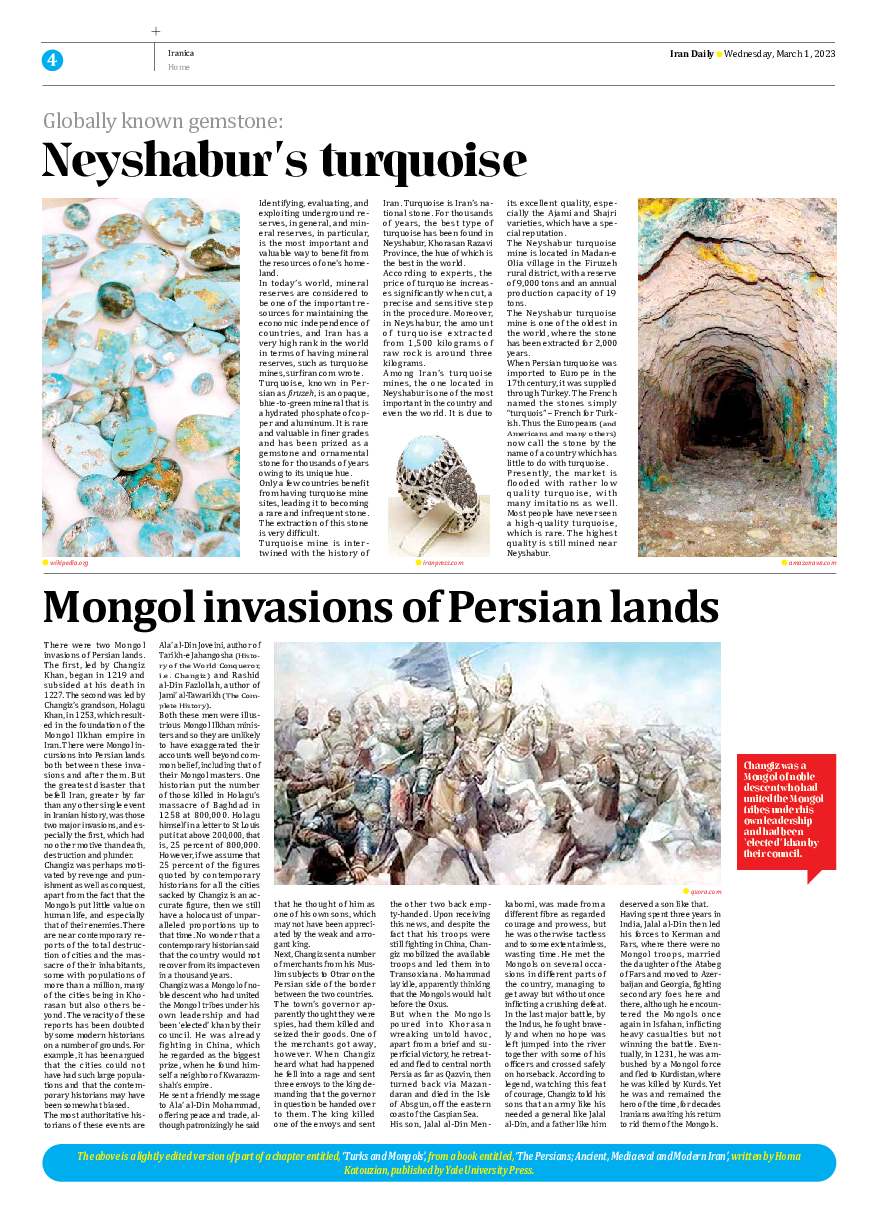
Globally known gemstone:
Neyshabur’s turquoise
Identifying, evaluating, and exploiting underground reserves, in general, and mineral reserves, in particular, is the most important and valuable way to benefit from the resources of one’s homeland.
In today’s world, mineral reserves are considered to be one of the important resources for maintaining the economic independence of countries, and Iran has a very high rank in the world in terms of having mineral reserves, such as turquoise mines, surfiran.com wrote.
Turquoise, known in Persian as firuzeh, is an opaque, blue-to-green mineral that is a hydrated phosphate of copper and aluminum. It is rare and valuable in finer grades and has been prized as a gemstone and ornamental stone for thousands of years owing to its unique hue.
Only a few countries benefit from having turquoise mine sites, leading it to becoming a rare and infrequent stone. The extraction of this stone is very difficult.
Turquoise mine is intertwined with the history of Iran. Turquoise is Iran’s national stone. For thousands of years, the best type of turquoise has been found in Neyshabur, Khorasan Razavi Province, the hue of which is the best in the world.
According to experts, the price of turquoise increases significantly when cut, a precise and sensitive step in the procedure. Moreover, in Neyshabur, the amount of turquoise extracted from 1,500 kilograms of raw rock is around three kilograms.
Among Iran’s turquoise mines, the one located in Neyshabur is one of the most important in the country and even the world. It is due to its excellent quality, especially the Ajami and Shajri varieties, which have a special reputation.
The Neyshabur turquoise mine is located in Madan-e Olia village in the Firuzeh rural district, with a reserve of 9,000 tons and an annual production capacity of 19 tons.
The Neyshabur turquoise mine is one of the oldest in the world, where the stone has been extracted for 2,000 years.
When Persian turquoise was imported to Europe in the 17th century, it was supplied through Turkey. The French named the stones simply “turquois” – French for Turkish. Thus the Europeans (and Americans and many others) now call the stone by the name of a country which has little to do with turquoise.
Presently, the market is flooded with rather low quality turquoise, with many imitations as well. Most people have never seen a high-quality turquoise, which is rare. The highest quality is still mined near Neyshabur.







